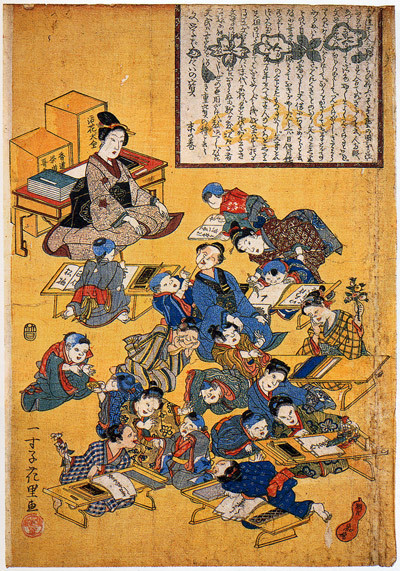Terakoya vs. Meiji School



Annotation
Contrary to impression left by document #2, schools for commoners were plentiful prior to the Meiji Restoration in 1868. These schools are usually known by the term terakoya, which literally means "temple school." The first image is of one such terakoya, depicted here in an 18th-century woodblock print. The second image is of a Meiji-era elementary school classroom, found in a teacher training manual. The contrast is stark; in particular, the classroom arrangement, the behavior of the children, and the overall learning atmosphere seems drastically different. Of course, one shouldn't conclude from these pictures that children in pre-Meiji terakoya were out of control and those in modern elementary schools were orderly. However, bodily discipline and the regimentation of time and space within the school—which are depicted clearly in the second image—were indeed priorities for Meiji-era educators. The arrangement of the classroom—with a blackboard and the teacher's desk at the front, and student desks in straight lines all facing the same direction—reflected these new priorities.
This source is a part of the Educational Reform in Japan (19th c.) teaching module.
Credits
Wikimedia Commons. S.v. "Image: Former Kaichi School01 1024." (accessed September 22, 2008). Yukio, Hijikata. "Shihan gakkou shougakkou juhou." Quoted in Nagura Eizaburo. Nihon no Kyouiku shi. Tokyo, 1984. "The Old Kaichi Schoolhouse." Flickr. (accessed September 22, 2008). Annotated by Brian Platt.